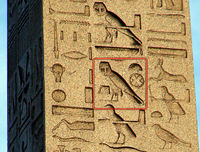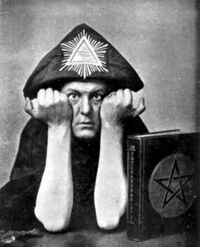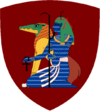Holy Kingdom of New Shakya
This article refers to a micronation or element of micronationalism which is defunct and no longer exists. You can help make the article reflect that or ask on the talk page for further information. |
Holy Kingdom of Kemet | |
|---|---|
| Motto: "I AM" | |
| File:N/A | |
| Capital and largest city | Egyptia |
| Official languages | English, Gaelic, German, Russian |
| Government | Absoultist Alternative Government |
• High King | Vidhur |
• High Priest | (vacant) |
| Currency | BitCoin |
| Time zone | UTC |
The Kingdom of Kemet is a neopagan (specifically Celtic, Germanic and Kemetic) alternative government based in California.
Etymology
"Kemet" is derived from the Egyptian word km.t, meaning "Egypt".

History
Praa of Kemet
Originally a fully Kemetic micronation claiming Bir Tawil and the living space of all registered citizens, formed by Vidhur in 2012. It fell into inactivity with the forming of DIPA, and then the Realm under Freya.
Modern
The modern Kingdom of Kemet was formed in 2013.
Government and politics
Kemet is an absolute monarchy, headed by a High King, who presides over a High Priest.
Culture
Three Aeons
In the religion of Thelema, it is believed that the history of humanity can be divided into a series of Aeons, each of which was accompanied by its own forms of "magical and religious expression". The first of these was the Aeon of Isis, which Thelemites believed occurred during prehistory and which saw mankind worshipping a Great Goddess, symbolized by the ancient Egyptian deity Isis. In Thelemite beliefs, this was followed by the Aeon of Osiris, a period that took place in the classical and mediaeval centuries, when humanity worshipped a singular male god, symbolized by the Egyptian god Osiris, and was therefore dominated by patriarchal values. And finally the third aeon, the Aeon of Horus, which was controlled by the child god, symbolized by Horus. In this new aeon, Thelemites believe that humanity will enter a time of self-realization and self-actualization.
Patron God

In Egyptian mythology, Heh (also Huh, Hah, Hauh, Huah, Hahuh) was the deification of eternity in the Ogdoad, his name itself meaning "endlessness". As a concept, he was androgynous, his female form being known as Hauhet, which is simply the feminine form of his name. In other words, Ḥeḥ was the ancient Egyptian divine personification of "infinity", in the temporal aspect of 'eternity'.
The god Ḥeḥ was usually depicted anthropomorphically, as in the hieroglyphic character, as a male figure with divine beard and lappet wig. Normally kneeling (one knee raised), the god typically holds in each hand a notched palm branch. (These were employed in the temples for ceremonial time-keeping, which use explains the use of the palm branch as the hieroglyphic symbol for rnp.t, "year"). Occasionally, an additional palm branch is worn on the god's head.
Hypersigil
The nation itself is a hypersigil, an extended work of art used to direct willpower in order to create change in reality. The term was popularized (if not coined) by Grant Morrison. His comic book series The Invisibles was intended as a hypersigil.
Aleister Crowley
Aleister Crowley (/ˈkroʊli/ kroh-lee; 12 October 1875 – 1 December 1947), born Edward Alexander Crowley, and also known as both Frater Perdurabo and The Great Beast 666, was an English occultist, mystic, ceremonial magician, poet and mountaineer, who was responsible for founding the religious philosophy of Thelema. In his role as the founder of the Thelemite philosophy, he is an unofficial patron saint (along with Heh) of the nation.


